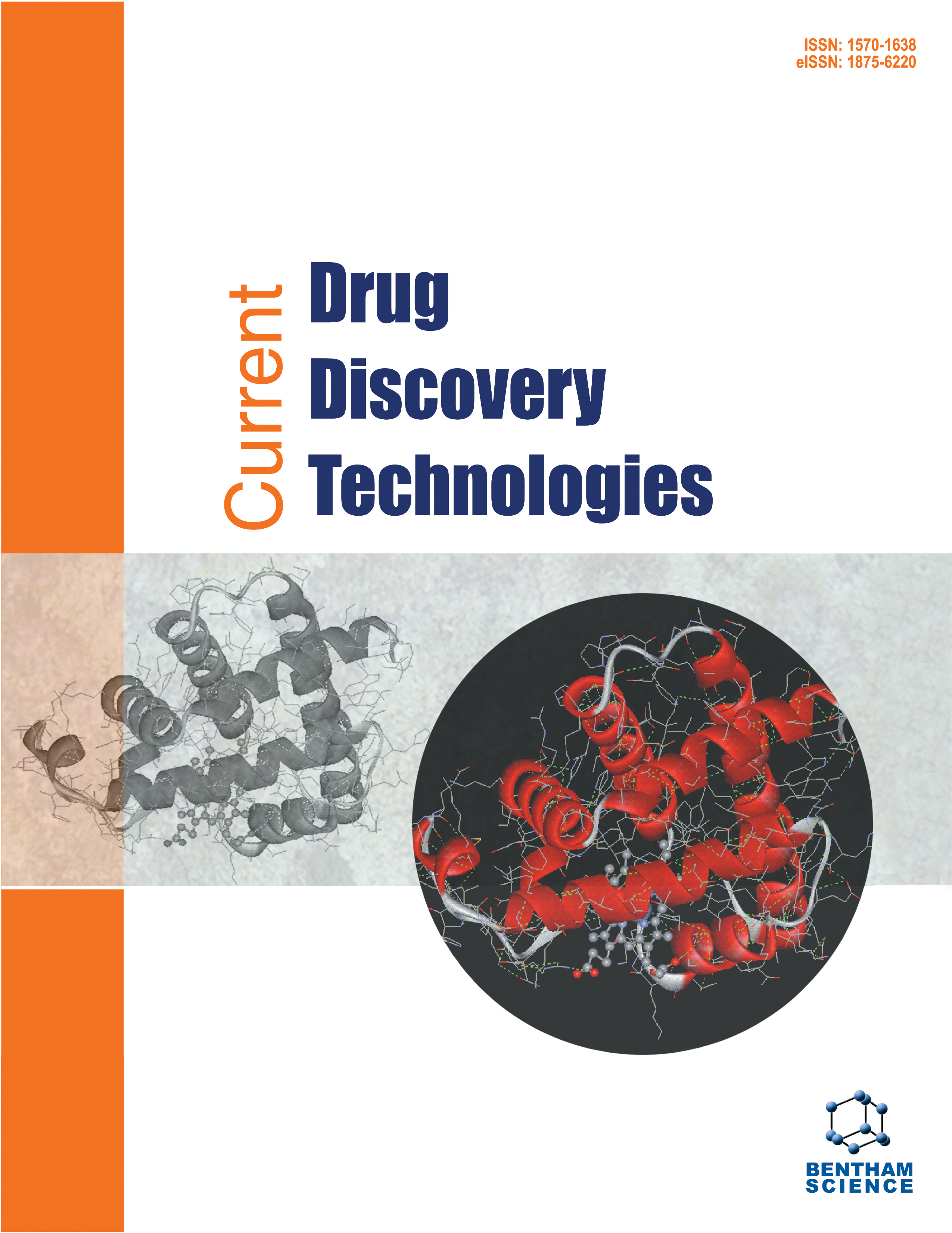- Home
- A-Z Publications
- Current Drug Discovery Technologies
- Previous Issues
- Volume 9, Issue 2, 2012
Current Drug Discovery Technologies - Volume 9, Issue 2, 2012
Volume 9, Issue 2, 2012
-
-
Editorial [Hot Topic: New Anticoagulant Drugs: A Change of Paradigm? (Guest Editor: Antonio Gomez-Outes)]
More LessHeparin and vitamin K antagonists (VKA) have been the mainstay of anticoagulant therapy for more than 60 years, thus representing true milestones in the improvement of patients care. Nevertheless, these drugs have several limitations, such as the need for parenteral administration (i.e. heparins), slow onset of action, a narrow therapeutic window, multiple drug interactions, genetic polymorphisms and need for antic Read More
-
-
-
Discovery of Anticoagulant Drugs: A Historical Perspective
More LessThe history of the traditional anticoagulants is marked by both perseverance and serendipity. The anticoagulant effect of heparin was discovered by McLean in 1915, while he was searching for a procoagulant in dog liver. Link identified dicumarol from spoiled sweet clover hay in 1939 as the causal agent of the sweet clover disease, a hemorrhagic disorder in cattle. Hirudin extracts from the medicinal leech were first used for Read More
-
-
-
Clinical Drug Development in Thromboembolic Diseases: Regulatory and Methodological Approach
More LessAuthors: Gonzalo Calvo-Rojas and Antonio Gomez-OutesCoinciding in time with the expiration of the patent of enoxaparin and clopidogrel, a number of new antithrombotics (anticoagulants and antiplatelets with new mechanisms of action) have been developed or are still under development for both venous and arterial thromboembolic complications. The effect of antithrombotic drugs is a continuum where a fine tune assessment of the ischemic events that are intended Read More
-
-
-
New Oral Anticoagulants for Venous Thromboembolism: Focus on Factor Xa and Thrombin Inhibitors
More LessAuthors: Cecilia Becattini, Alessandra Lignani and Giancarlo AgnelliSeveral oral direct anti-Xa agents and one antithrombin agent are currently under clinical development for the prevention and treatment of venous thromboembolism (VTE). The anti-Xa inhibitors rivaroxaban (10 mg once daily) and apixaban (2.5 mg twice daily) as well as the thrombin inhibitor dabigatran (150 or 220 mg once daily) have been recently licensed for the prevention of VTE in total hip or knee replacement. The publi Read More
-
-
-
New Parenteral Anticoagulants: Focus on Factor Xa and Thrombin Inhibitors
More LessAuthors: Ingo Ahrens and Christoph BodeFor decades, unfractionated heparin (UFH) was the most widely used parenteral anticoagulant in a variety of clinical scenarios requiring rapid and reversible anticoagulation. The shortcomings of UFH include a high inter-individual variability and the occurrence of heparin induced thrombocytopenia with the potential for serious thromboembolic complications. These shortcomings prompted the successful clinical de Read More
-
-
-
Regulatory Considerations for Generic or Biosimilar Low Molecular Weight Heparins
More LessAuthors: Alfredo Garcia-Arieta and Antonio BlazquezThe aim of the present paper is to address the legal aspects, technical requirements and possible conditions of use associated to low molecular weight heparin generics and biosimilars that are arriving to the market in United States and the European Union, respectively. To this end the concept of “similar biological medicinal product” that was coined in 2003 by the pharmaceutical legislation of the European Union is co Read More
-
-
-
Reversing Anticoagulant Therapy
More LessAuthors: Shari Ghanny, Theodore E. Warkentin and Mark A. CrowtherFor more than 50 years, heparin(s) and warfarin have been the most important anticoagulant agents, and clinicians are accustomed to their specific antidotes (protamine sulfate and vitamin K/plasma [or factor concentrates], respectively). Recently, there has been an explosion of novel anticoagulant development: ideally, these newer agents should have advantages over traditional anticoagulants, such as fewer side effe Read More
-
-
-
New Targets for Anticoagulation and Future Perspectives
More LessAuthors: Jack Ansell and David AskinUnfractionated heparin (UFH) and the vitamin K antagonists (VKA), have been standard anticoagulants for the last 70 years. They have a widespread effect on many coagulation factors, the serine proteases for UFH and the vitamin K dependent factors for the VKAs. Refinements in the heparin molecule have occurred with the development of low molecular weight heparins and eventually, fondaparinux, the latter of whic Read More
-
Volumes & issues
-
Volume 22 (2025)
-
Volume 21 (2024)
-
Volume 20 (2023)
-
Volume 19 (2022)
-
Volume 18 (2021)
-
Volume 17 (2020)
-
Volume 16 (2019)
-
Volume 15 (2018)
-
Volume 14 (2017)
-
Volume 13 (2016)
-
Volume 12 (2015)
-
Volume 11 (2014)
-
Volume 10 (2013)
-
Volume 9 (2012)
-
Volume 8 (2011)
-
Volume 7 (2010)
-
Volume 6 (2009)
-
Volume 5 (2008)
-
Volume 4 (2007)
-
Volume 3 (2006)
-
Volume 2 (2005)
-
Volume 1 (2004)
Most Read This Month
Article
content/journals/cddt
Journal
10
5
false
en


